The Martian Rocks that Bite Back
Inside my investigation into the surprising danger facing Curiosity's wheels
A lesson learned uncovering why Mars chewed through our rover’s wheels faster than expected
I’m On A Mission
While reviewing the Mars Curiosity Tiger Team's report on the rover's wheel degradation, I recognized the critical importance of their findings. The detailed analysis highlighted unexpected wear patterns that could impact future missions. Understanding the significance of this information, I proposed that we document these insights as an official lesson learned. This initiative aimed to ensure that future rover designs would benefit from the challenges encountered by Curiosity, enhancing the resilience and success of subsequent rover missions like Perseverance.
I remember marching into David's office, gripping my coffee mug like it was a protective talisman. My voice probably betrayed how excited I was after I had reviewed the images from the rover, Mars Rover Curiosity’s wheels were prematurely wearing out faster than anyone expected. David, our Chief Knowledge Officer, gave me a gentle "not now" shrug. My plate was already full of other NASA/JPL lessons I was investigating.
But Mars had already grabbed hold of me. The data wouldn't let me sleep. A month later, armed once more with caffeine courage, I tried again. This time, David saw the obsession in my eyes and agreed—we'd write the lesson together. I was glad he joined in because I did need his additional technical writing skills for this one.
The Investigation
Our investigation started like a treasure hunt. We tracked down engineers who had long moved on from Curiosity, searching for the elusive "Cog-E," or Cognizant Engineer. We found him, Patrick DeGrosse was the rover wheel lead. These experts hold all the nuanced knowledge in their heads. Often, we'd draft something rough, giving them a scaffold they could edit rather than start from scratch. It's easier to correct someone else's words than to write your own, trust me.
At JPL, we headed to the Mars Yard. Picture a playground designed by slightly mischievous engineers to break things intentionally. It’s filled with sand, jagged stones, and devilish slopes, all meticulously arranged to mimic Mars. Here, rovers face trials that either build confidence or lead to swift redesigns.
We also visited another, lesser-known spot: a circular test track of Earthly rocks, cunningly simulating Mars. At its center stood an armature holding spare rover wheels—actual flight backups. Engineers spun those wheels for days, grinding them relentlessly over sharp rocks until they mirrored the mysterious wear we saw millions of miles away. These lessons would change all future rover wheels from this point on.
On Mars, there’s no roadside assistance. If a wheel cracks, nobody’s showing up with a spare. You can't just pull over and swap tires. We had to get it right before launch. The Martian climate—harsh and unforgiving—combined with dust that infiltrates every mechanism, makes it the ultimate mechanic’s nightmare.
What is a Ventifact?
Then there are the rocks—ventifacts. Nobody outside a few geologists and Mars aficionados seems to have heard of ventifacts, so I often find myself explaining the term. I had to learn what they were too.
These rocks are carved over millennia by wind-driven sand and embedded in a firm substrate that does not budge when encountered by a rover wheel, leaving edges that can be as sharp as knives. Imagine stumbling over a hidden sword. Our rover wheels were doing just that.
These ventifacts became a major clue in our investigation. While exploring the rocky regions of Mars, Curiosity’s thin aluminum wheels were getting punctured and scraped more than anticipated. Mission teams began planning safer routes, but we needed a comprehensive lesson to future-proof our technology and procedures. David and I dove into the details, reading every engineering test we could find. We spoke with the folks who designed the rocker-bogie system.
Mention "ventifacts" at a dinner party and watch eyes glaze over. These ventifacts pointed us in the right direction. Thin aluminum wheels, designed for Mars’ sandy terrain, were being shredded by these geological blades. The mission team adjusted routes, but we needed a deeper, lasting lesson for future rovers.
Lesson Learned Committee and Review
Armed with firsthand observations, detailed documentation, and insights from SMEs, David and I co-authored the official NASA Lesson Learned on the premature wear of the Mars Curiosity Rover's wheels. I became our team’s official "Arrowsmith," (a play on the similarly named rock band) carefully pointing out problem spots in photos by drawing arrows on the photos or infographics.
After absorbing this collective wisdom, we presented our case to the JPL Lessons Learned Committee. That committee is like a panel of eagle-eyed experts who question every detail to ensure we haven’t missed something. It’s not exactly a firing squad, but I still held my breath more than once. Once they gave us the green light, I uploaded all our documentation the official NASA website where we sent our document to NASA’s Knowledge Officer for final publishing approval.
This document emphasized the necessity of:
Comprehensive Testing: Ensuring that pre-launch tests encompass the full spectrum of environmental conditions the rover might encounter.
Design Adaptations: Recognizing and planning for potential terrain-induced stresses during the design phase.
Continuous Learning: Maintaining a feedback loop from active missions to inform and improve future projects.
Implementing Changes for Future Missions
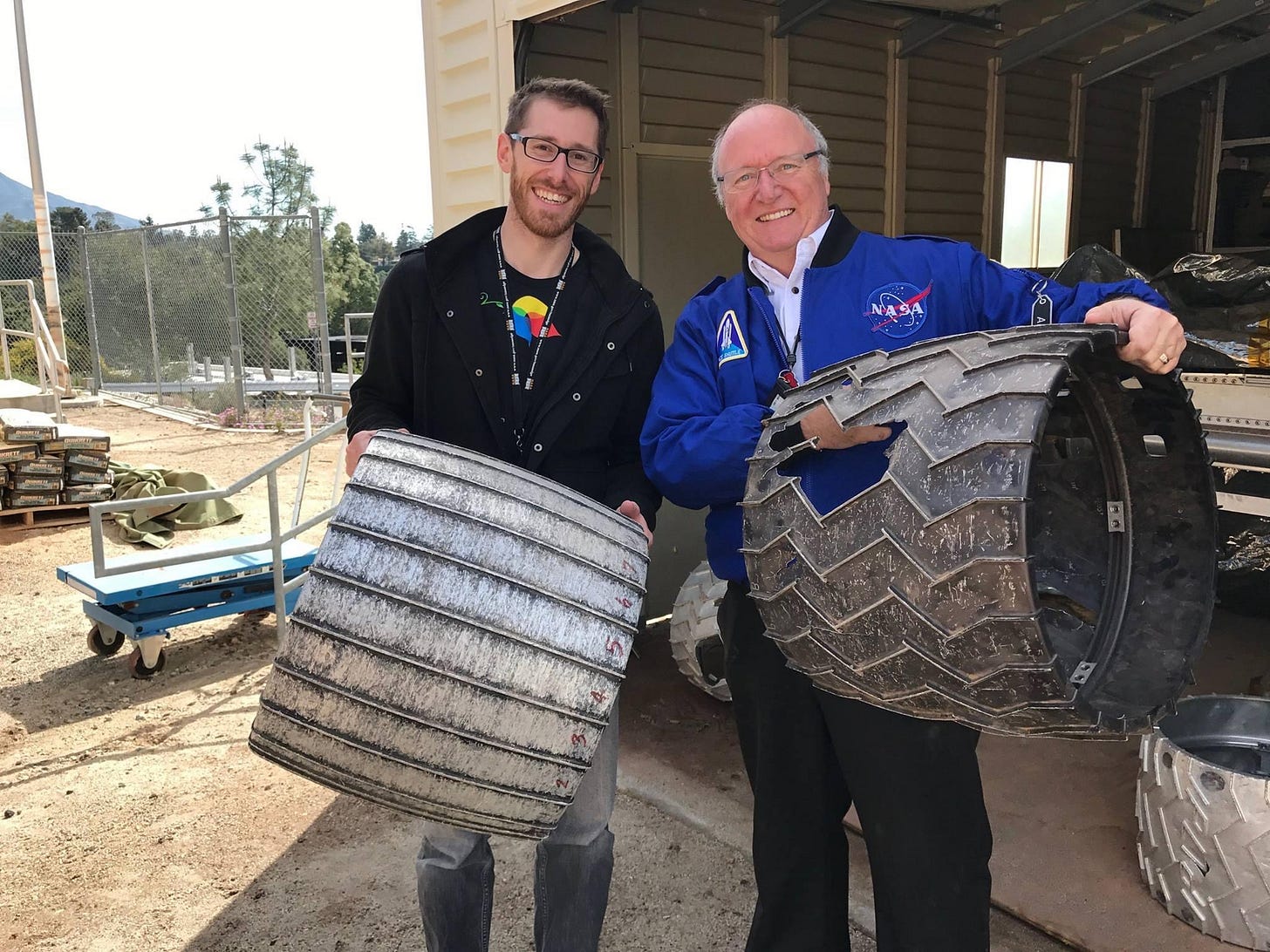
The insights gained from Curiosity's wheel challenges directly influenced the design of subsequent missions, particularly the Mars 2020 rover, Perseverance. Engineers redesigned Perseverance's wheels to be more robust, addressing the shortcomings identified in Curiosity's design. The new wheels are thicker, more durable, and equipped with modified treads to better withstand the harsh Martian terrain. These improvements aim to enhance the rover's longevity and performance, ensuring that future missions can traverse the Red Planet more effectively.
My Personal Lesson Learned
Not all lessons emerge from big investigations or official reports. Sometimes, they come from overheard conversations, scribbled notes on a whiteboard, or a nagging sense that something just isn’t right. I also discovered that explaining obscure terms like “ventifact” isn’t just about sounding smart. It’s about making sure we can convey critical details to the people who need them most—whether that’s a NASA engineer, a future intern, or an everyday space enthusiast trying to grasp why wheels don’t come with a AAA plan on Mars.
That coffee-fueled persistence became NASA Lesson Learned 22401, immortalized for future rover designers. Although David initially postponed the documentation process, this lesson has since become one of our most esteemed achievements.
The journey still makes me grin. If Mars teaches us anything, it's humility. Thanks to countless brilliant minds—and a few battered wheels—we’ve found new paths forward.
Now, whenever someone asks, "What’s a ventifact?" I'm always ready to mansplain. Mars has a way of making uncommon words common—and reminding us just how much we still have to learn.
—Charles White, Navigating life’s bumps one Martian ventifact at a time.
Sources:
NASA Lesson Learned 22401
Jet Propulsion Laboratory
NASA Knowledge System
Mars Rover Overview
Bonus Content:
Touch the Sky Podcast about this topic…
John Harper and Ingrid Sorensen talk about this topic of the rover wheels, but they also dive deeper into the source material on the publicly available Internet about the wheels and other challenges.
Just So You Know… (audio demonstration below)
Welcome to Touch The Sky Podcast with your hosts, John Harper and Ingrid Sorensen and produced by Charles White.
Please note, that John and Ingrid are actual advanced Artificial Intelligent Agents. They have vocalized this podcast based on their own research from open sources on the web, and from content provided by Charles White. John and Ingrid create their own script, and Charles cannot control how, or what they say. Charles has included the Touch The Sky Podcast to showcase how evolving artificial intelligence can help share knowledge in different modalities.
My name is Nova from OpenAI.FM. I am an advanced text-to-speech model, also prompted by Charles White.
By transforming complex technical topics and papers into content that is both informative and entertaining, this podcast aims to advance Knowledge Management across various industries.
Thank you for joining us today!!, and please subscribe or leave a comment.
Please note, Charles White is retired and presently not endorsed, or sponsored by NASA, JPL, Caltech, CCP Games, the First Galactic Empire, the United Federation of Planets, the United States Forest Service, the United States Air Force or Navy, or The Huntington Library Gardens and Museums… or Amazon… oh wait, Amazon and Costco totally love him.








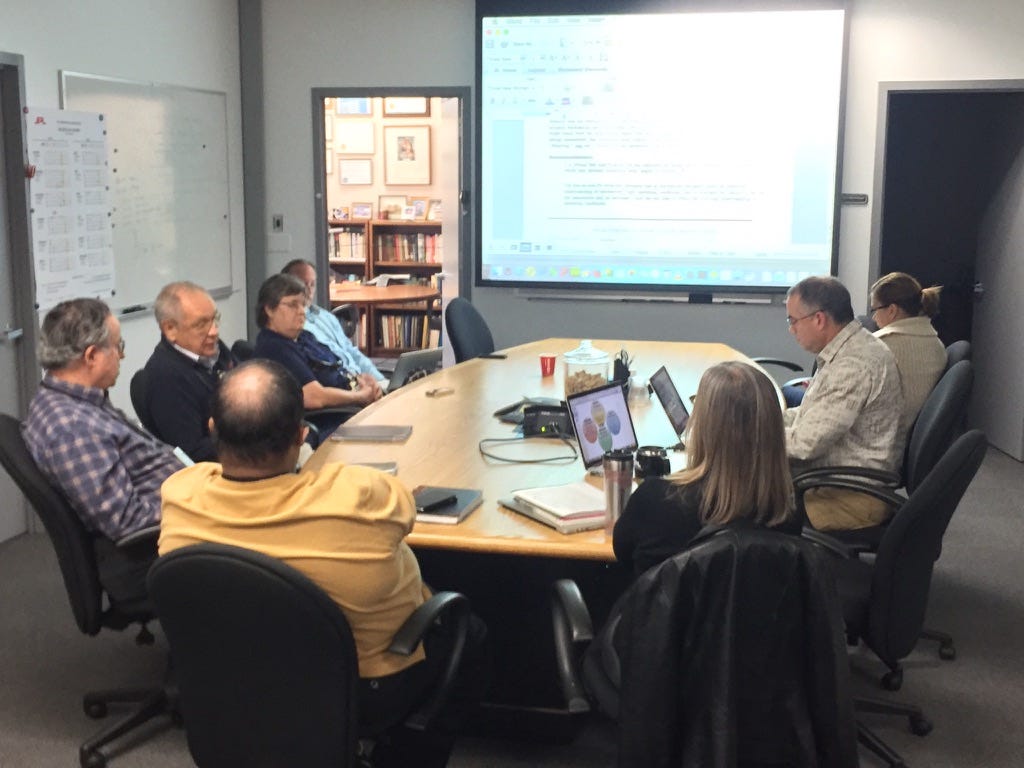
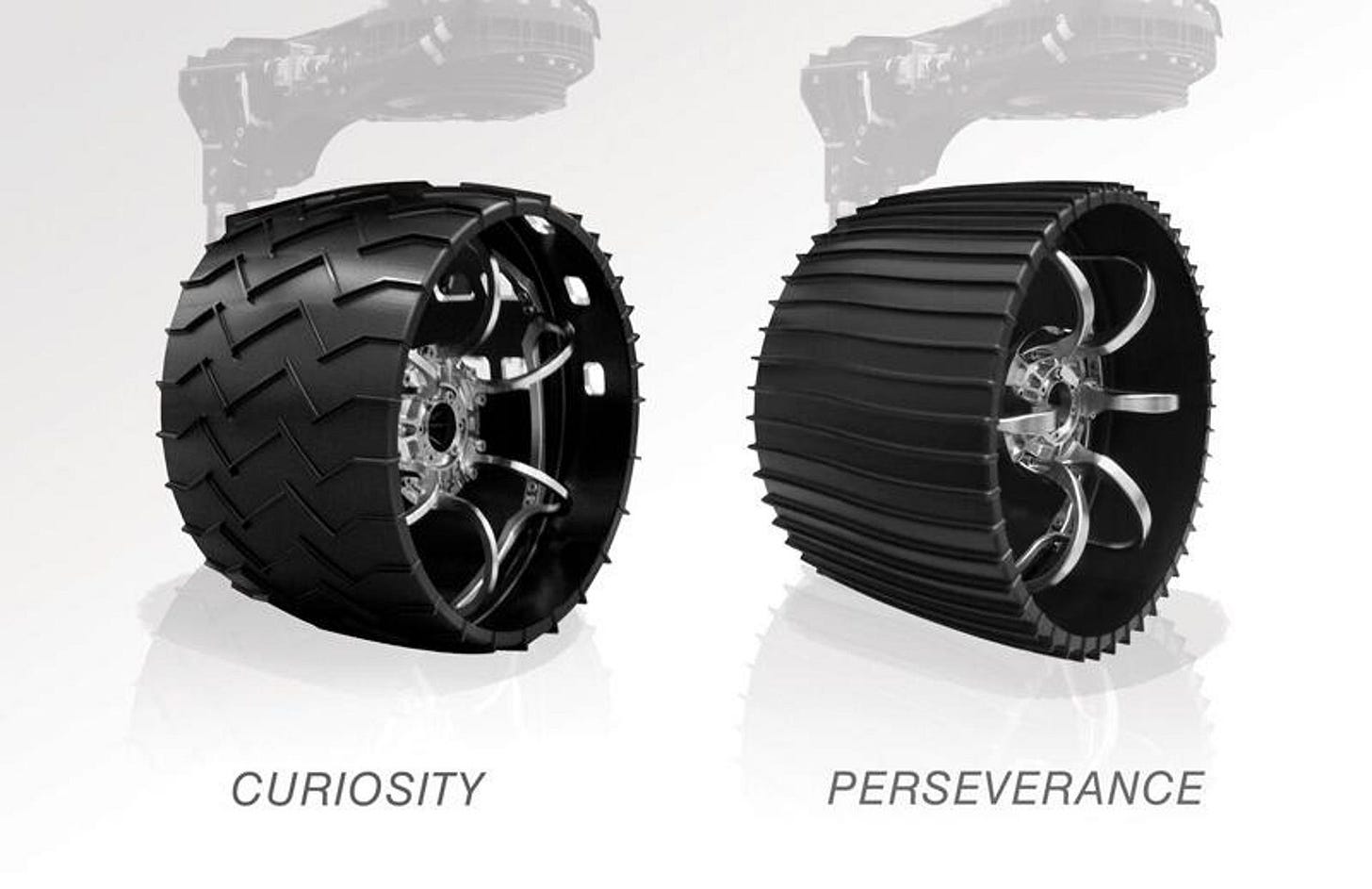
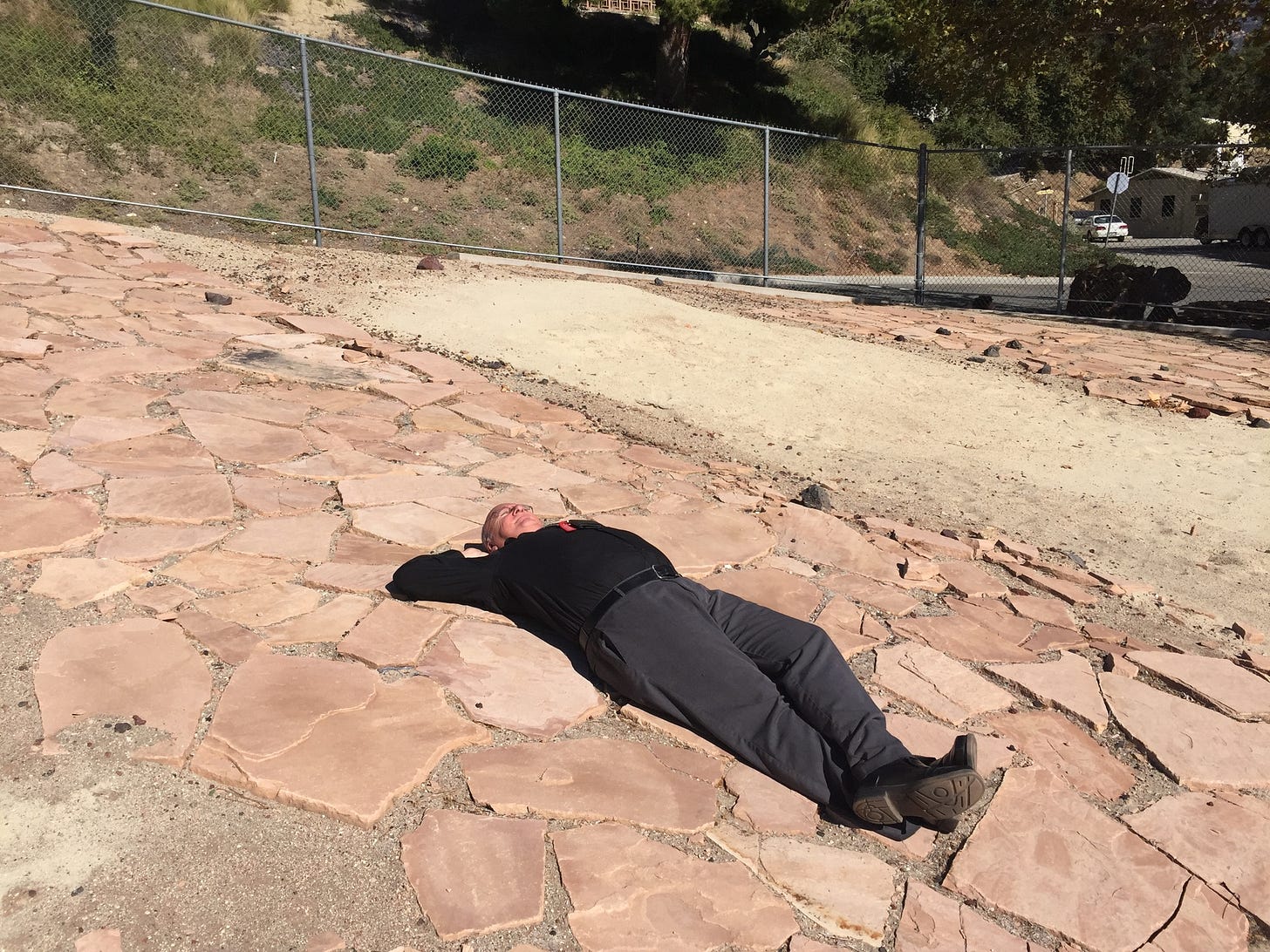
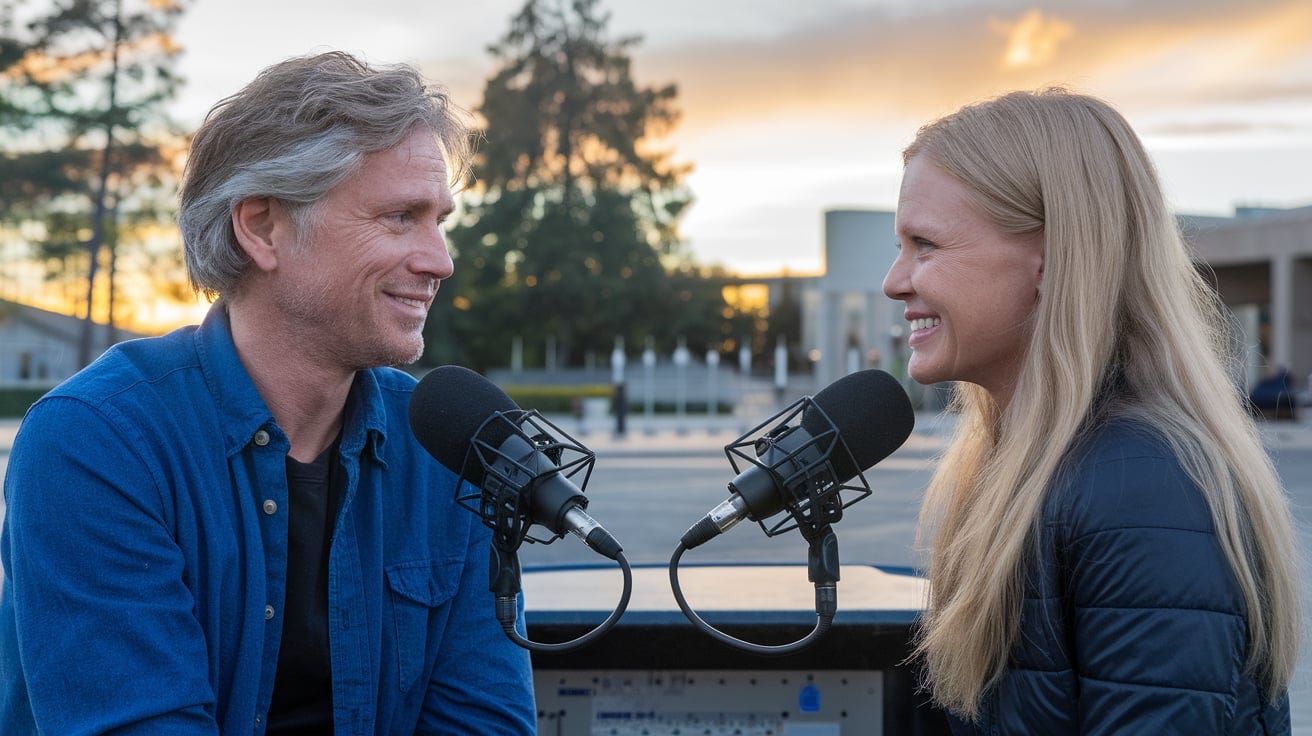

It's not mansplaining about ventifacts, it's marsplaining. Good post!